This is the sixth and last of the six articles about former Edo Castle.
In this entry, I'll pick up remaining part of the outer moats.
- Part 1: Outline of Edo Castle
- Part 2: Kokyo Gaien, Wadakura Funsui Koen
- Part 3: Kokyo Higashi Gyoen
- Part 4: the Imperial Palace & Inui Street
- Part 5: Kitanomaru Koen
- Part 6: Outer moats (this page)
The outer moat of Edo Castle when the Edo period ended is shown as a red line on the map at the bottom of this page. The purple lines are inner moats. Unfortunately substantial part of them are now lost. Along these moats dozens of large gates were placed, but only ruins of some of them are left now. So I must tell you first that, honestly speaking, the priority of this whole "Outer Moats" thing as sightseeing sites is not so high.
The black line, the most downstream part of the Kanda River which eventually flows into the Sumida River, is often thought to be part of outer moats because this part was created in the Edo Period, and like outer moats huge gates accompanied by stone walls were placed along it as well.
Northeastern outer moats
There used to run outer moats which divided the inner castle from the outer castle just east side of JR Tokyo Station but was buried after WWII. The road in front of the Tokyo Station is its trail.
 Ruins of Tokiwabashimon Gate
Ruins of Tokiwabashimon Gate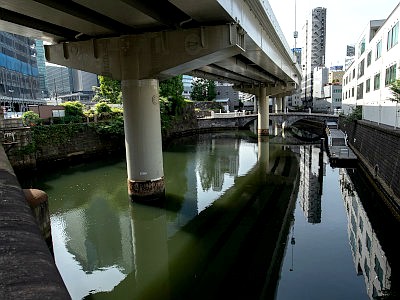
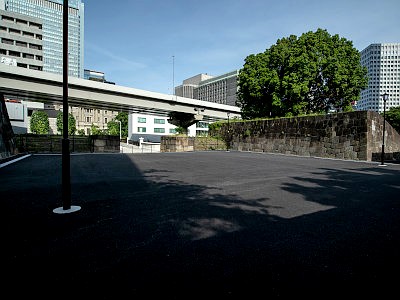
The remaining part of the outer moats of this area is the western half of Nihonbashi River.
Quite near Tokyo Station, there remain ruins of the Tokiwabashimon Gate facing this river, though the present stone bridge in front of it was created in the Meiji Era.
 Remaining stone walls on Nihonbashi River
Remaining stone walls on Nihonbashi River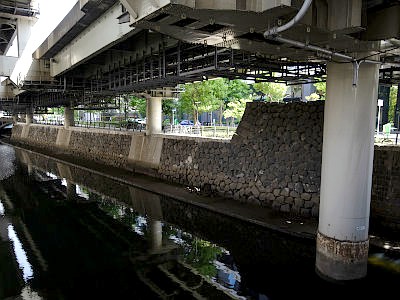
Some part of stone walls covering the shore of Nihonbashi River is left like this.
Northern to eastern outer moats
This part of outer moat is preserved quite well, though gates are destroyed.
 Ruins of Ushigomemon Gate
Ruins of Ushigomemon Gate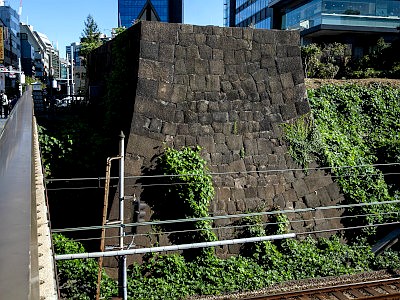
 Ushigome-bori Moat
Ushigome-bori Moat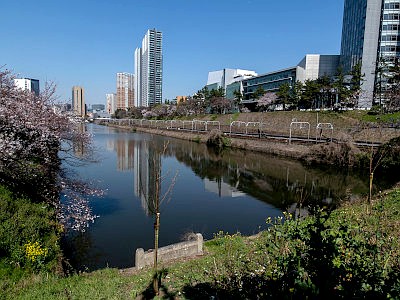
 Shinmitsuke-bori Moat
Shinmitsuke-bori Moat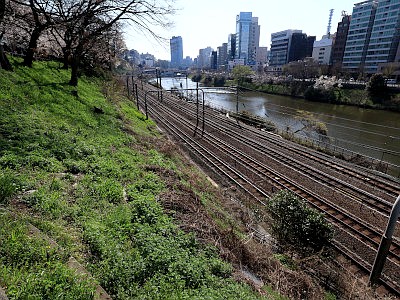
 Reconstructed stone wall inside Subway Ichigaya Sta.
Reconstructed stone wall inside Subway Ichigaya Sta.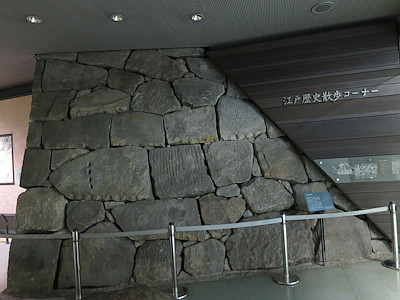
Along the under ground passage of the Tokyo Metro Subway's Ichigaya Station, there is a small reconstruction of stone ramparts for the outer moats relocated from around the Nihonbashi River.
 Ichigaya-bori Moat
Ichigaya-bori Moat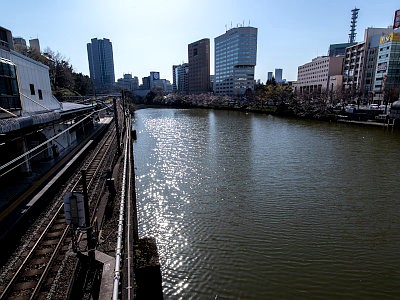
 Ruins of Yotsuyamon Gate
Ruins of Yotsuyamon Gate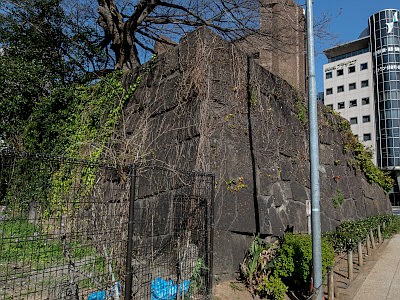
 Yotsuya-bori Moat (now without water)
Yotsuya-bori Moat (now without water)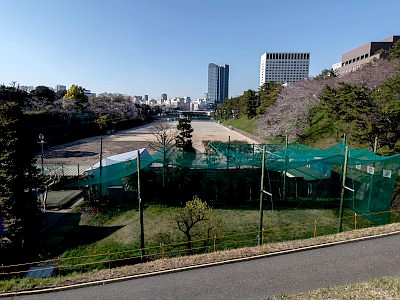
 Benkei-bori Moat
Benkei-bori Moat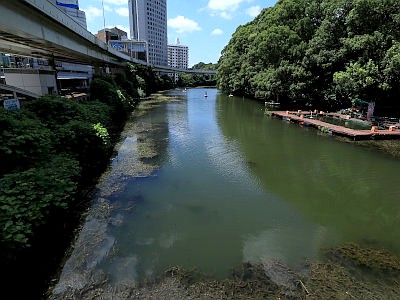
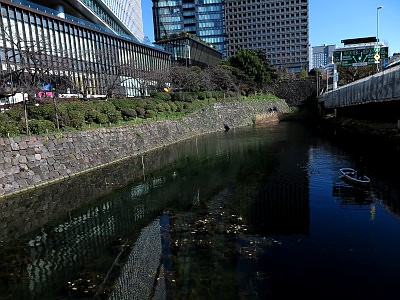
 Ruins of Akasakamon Gate
Ruins of Akasakamon Gate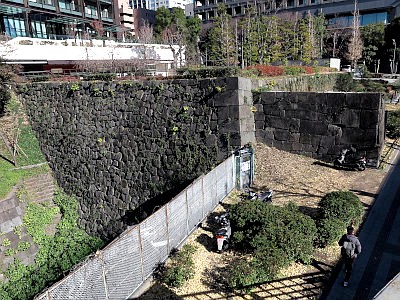
Southern part of outer moats from here is now lost.
Trails of southern outer moats
 Stone ramparts at Kasumigaseki Common Gate
Stone ramparts at Kasumigaseki Common Gate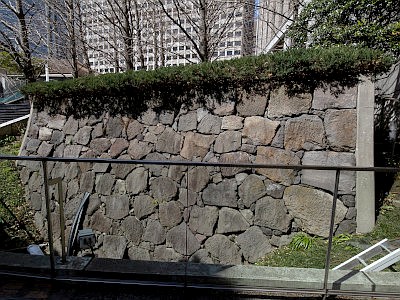
 Ruins of Hibiyamon Gate in Hibiya Park
Ruins of Hibiyamon Gate in Hibiya Park
 Ruins of Otemon Gate at Hama-rikyu
Ruins of Otemon Gate at Hama-rikyu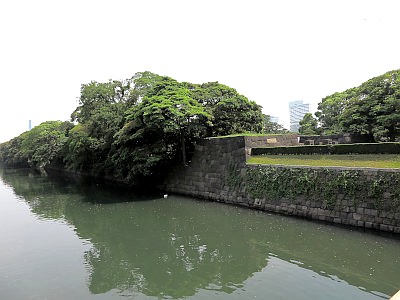
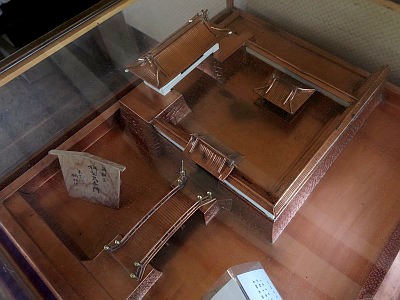
Modern-day Hama-rikyu Gardens used to be the villa of Tokugawa shoguns in the Edo period and also had a characteristic of an outer post of the Edo Castle. Hence, it was surrounded by moats and stone ramparts, had a huge gate resembling those of a castle, and connected with the Edo castle by way of canals and outer moats.
Lines on the map are moats and canals of the Edo period. The red line is the outer moats, purple lines are the inner moats, the black line is the Kanda River, which is often regarded as part of outer moats, and blue lines are other canals and such.